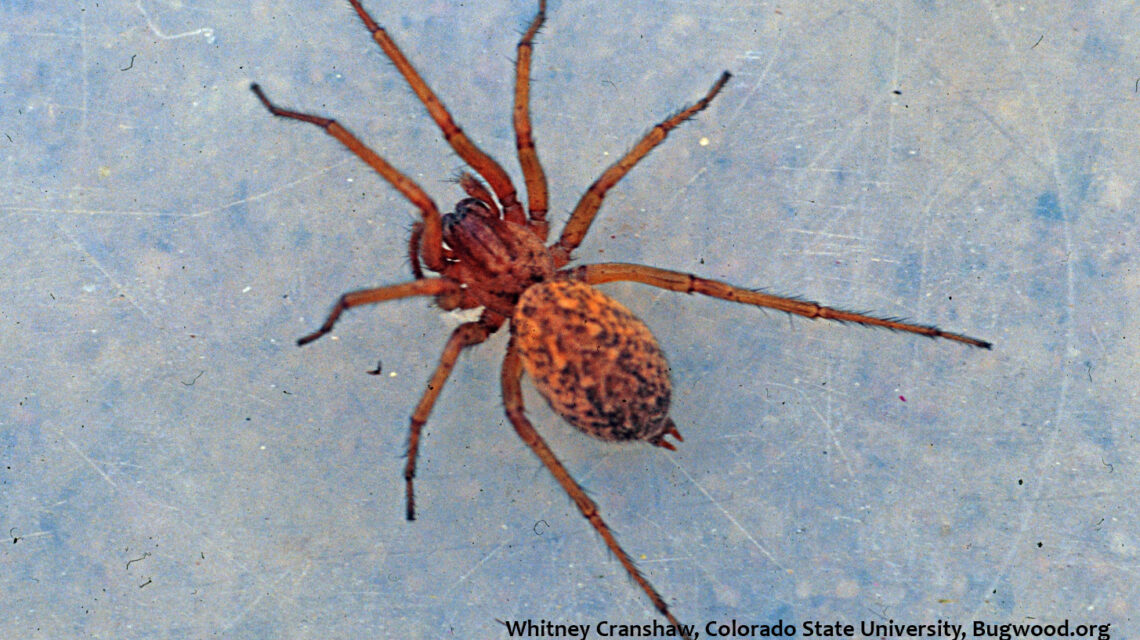Are you worried that you may have been bitten by a hobo spider? If you live in Utah, you have probably heard that hobo spiders are dangerous and aggressive—that one bite can cause serious skin lesions and nausea. However, recent research suggests that hobo spiders are not as dangerous as they seem.
Hobo Spider Behavior
Hobo spiders are common across the Wasatch Front. In Utah, hobo spiders mature from June to September, but most people notice them around August and September because late summer and fall is hobo spider mating season. During this time, male spiders search for female spiders hiding in their webs, which are usually ground level near a crack where they can escape from threats.


Along with hobo spiders, many spiders are more active this time of the year, including black widows and wolf spiders. However, like most spiders, hobo spiders prefer to be left alone and tend to make their webs in secluded areas. They are not aggressive towards humans and hide to avoid contact with them.
Identifying Hobo Spiders
Hobo spiders are often misidentified as brown recluse spiders (venomous spiders with a bite that can cause skin lesions). However, brown recluse spiders are native to some of the Midwest and Southern states, and they don’t normally travel this far west. They prefer warmer, milder climates that don’t have a hard freeze. Sometimes they end up in a box or a truck that is transported to this area, but they usually don’t survive the winter in our climate
Hobo spiders have a long, rounded body with a dark striped pattern on the back and yellow/brown legs. Females and males grow to about ½ inch long, but males tend to be slightly smaller. Because they struggle to climb walls and smooth surfaces, hobo spiders usually hide in corners on the ground and create funnel-shaped webs that they rest in while they wait for their prey.
Are Hobo Spiders Dangerous?


Hobo spiders usually bite humans only if they feel threatened or trapped. Some people think hobo spider bites cause skin lesions and other serious side effects. However, scientists have never found sufficient evidence to prove this.
A few recent hobo spider bite research studies have concluded that hobo spiders are not dangerous to humans. In one case, a bite caused twitching, but in all other cases, hobo spider bites caused only mild redness and itchiness.
If a hobo spider bites you, over-the-counter anti-itch creams and damp, cool cloths may help relieve the itchiness.
Occasionally, spider bites may become infected, or people may experience an allergic reaction to a bite. In cases like these, you will see the usual signs of an infection (skin discoloration, puss, tenderness, etc.) or an allergic reaction (a rash, excessively swollen skin around the area, etc.). If you experience any of these symptoms, seek medical attention.
How to Prevent Hobo Spiders from Moving In
Hobo spiders like dark, cool corners that remain undisturbed. They hide outside in firewood, in messy corners of garages, and in cracks. Do the following to prevent hobo spiders from moving in:
- Keep corners in your home and garage clean and clutter-free.
- Seal cracks around the base of your home and near entrances.
- Spray insecticide around the base of your home.
- Wear protective clothing to cover your skin while working in the garden or cleaning up cluttered areas in your home/garage.
If you’re experiencing a spider infestation, call Stewart’s Pest Control at 801-226-2261 today for a free service quote!



